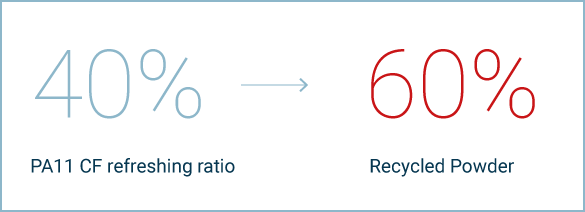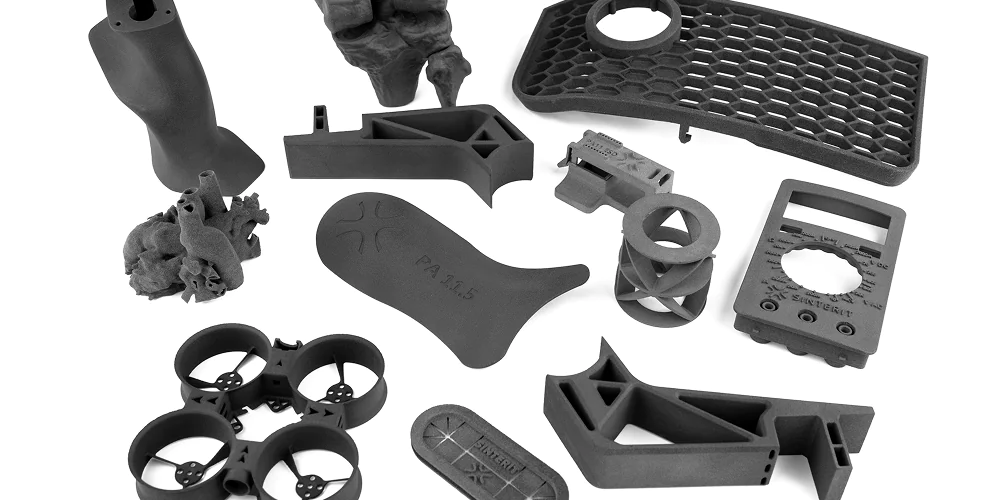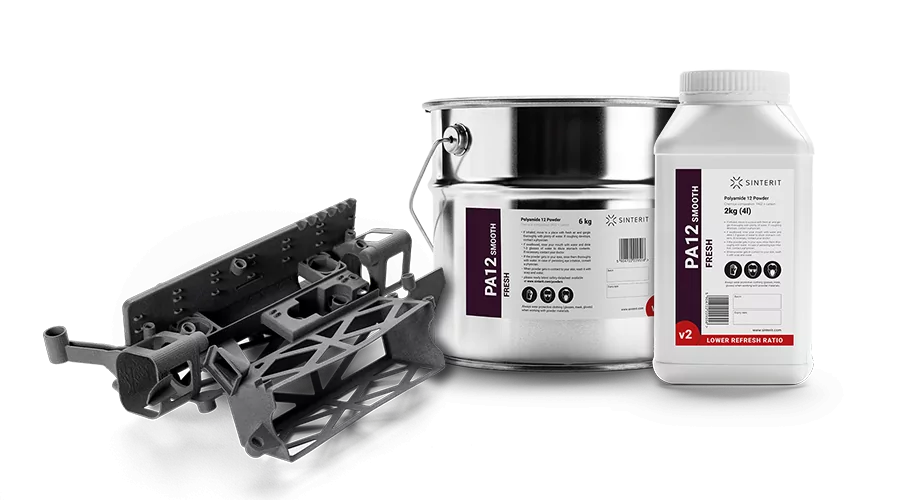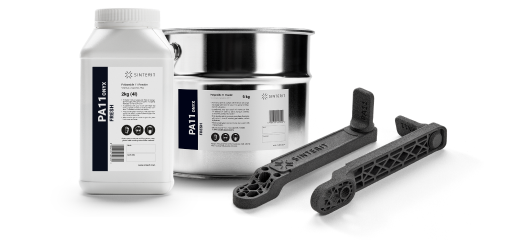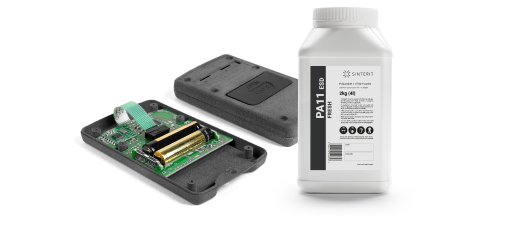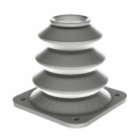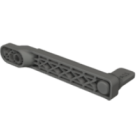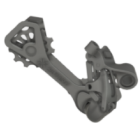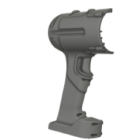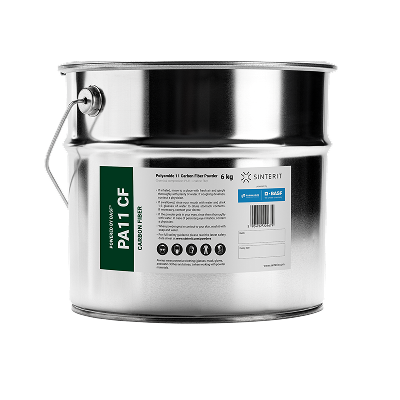
PA11 CF
One of the strongest and most versatile materials available on the powder market dedicated to SLS printing technology
BUY NOW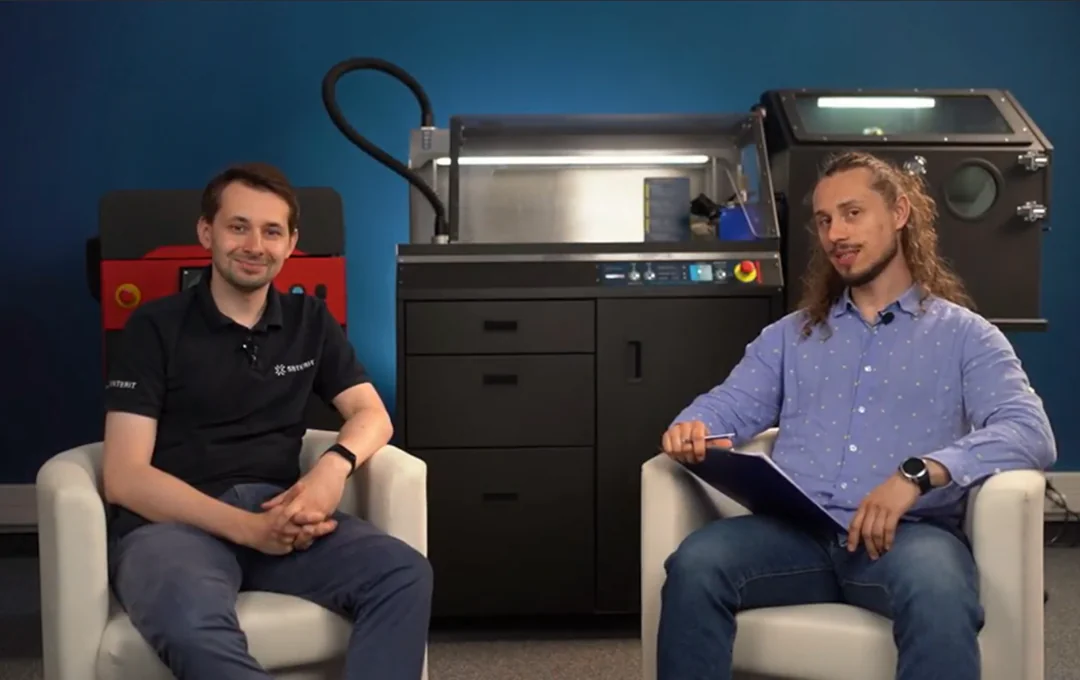
What is the refresh rate?
It is the ratio of a minimum amount of fresh powder needed in a mixture of material used in an SLS 3D printer. A lower refresh ratio means better cost-efficiency of the material.
How it works
The amount of needed fresh powder is automatically calculated by our software and shown on the printer screen after the print job is finished. Just add shown amount of material into the mixing cycle of used material and you can start your next job with refreshed material.
– Store the powder at room conditions ( ~23°C and 50% humidity – the lower humidity the better)
– Always store the material in a sealed dry box/container.
– Do not leave the container open.
– Clean the machine directly after printing and store the material immediately after removing the print cake.
– Do not let the powder stay in the printer for more than a couple hours.
– Put a few silicone absorbers in the container (but don’t add them to the printer)
Contact Sinterit support with your questions.
Starter powder is basically a print-ready powder.
In Sinterit we distinguish three powder conditions: print-ready, used, and fresh.
Used is a type of powder that you get after the printing, present in overflow bin or remaining after printout cleaning.
Fresh is a type of powder that is being used for refreshing the powder. After mixing this powder with used powder you will receive print-ready.
Print-ready is a type of powder that you can simply pour into the printer and start printing.
Although printing using Fresh is possible it’s not economically optimal therefore Sinterit printers are optimized for using a refreshed (print-ready) powder.
SLS polyamide powder used for 3D printing is considered particulate matter because of its size. Polyamide powder particles are generally 40 micrometers or smaller. If vacuumed in an ordinary vacuum cleaner, the powder could cause an explosion.
Such materials are subject to labor regulations on air quality and occupational safety. The procedures call for appropriate maintenance of powder at work. Only certified industrial vacuum cleaners should be used to clean such materials. More information about the ATEX Vacuum cleaner can be found here.
Contact Sinterit support with your questions.
PA11 Carbon Fiber is a bio-derived composite powder based on Polyamide 11 and enhanced with carbon fibers. It offers superior mechanical strength, thermal resistance, and stiffness, making it one of the strongest SLS powders available.
This material is ideal for high-performance automotive parts, motorsport components, aerospace models, prosthetics, maintenance tools, and mechanical parts in extreme environments.
It is compatible with the Sinterit Lisa X and Lisa Pro printers.
Yes, nitrogen is required to print with PA11 Carbon Fiber.
The refresh ratio is 40%, meaning 40% of the powder in a new job must be fresh.
PA11 Carbon Fiber offers a tensile strength of up to 65.9 MPa, flexural strength up to 87.3 MPa, and impact resistance up to 73.9 kJ/m² (Charpy unnotched).
It features a melting point of 197 °C and a heat deflection temperature (HDT B) of up to 190 °C in the X direction—one of the highest in Sinterit’s powder range.
PA11 Carbon Fiber provides good surface quality along with high stiffness, dimensional stability, and chemical resistance.
The powder and printed parts are black, which gives a professional, high-performance appearance.
Yes, it is bio-based and derived from castor oil, making it an environmentally conscious choice for high-end engineering applications.






